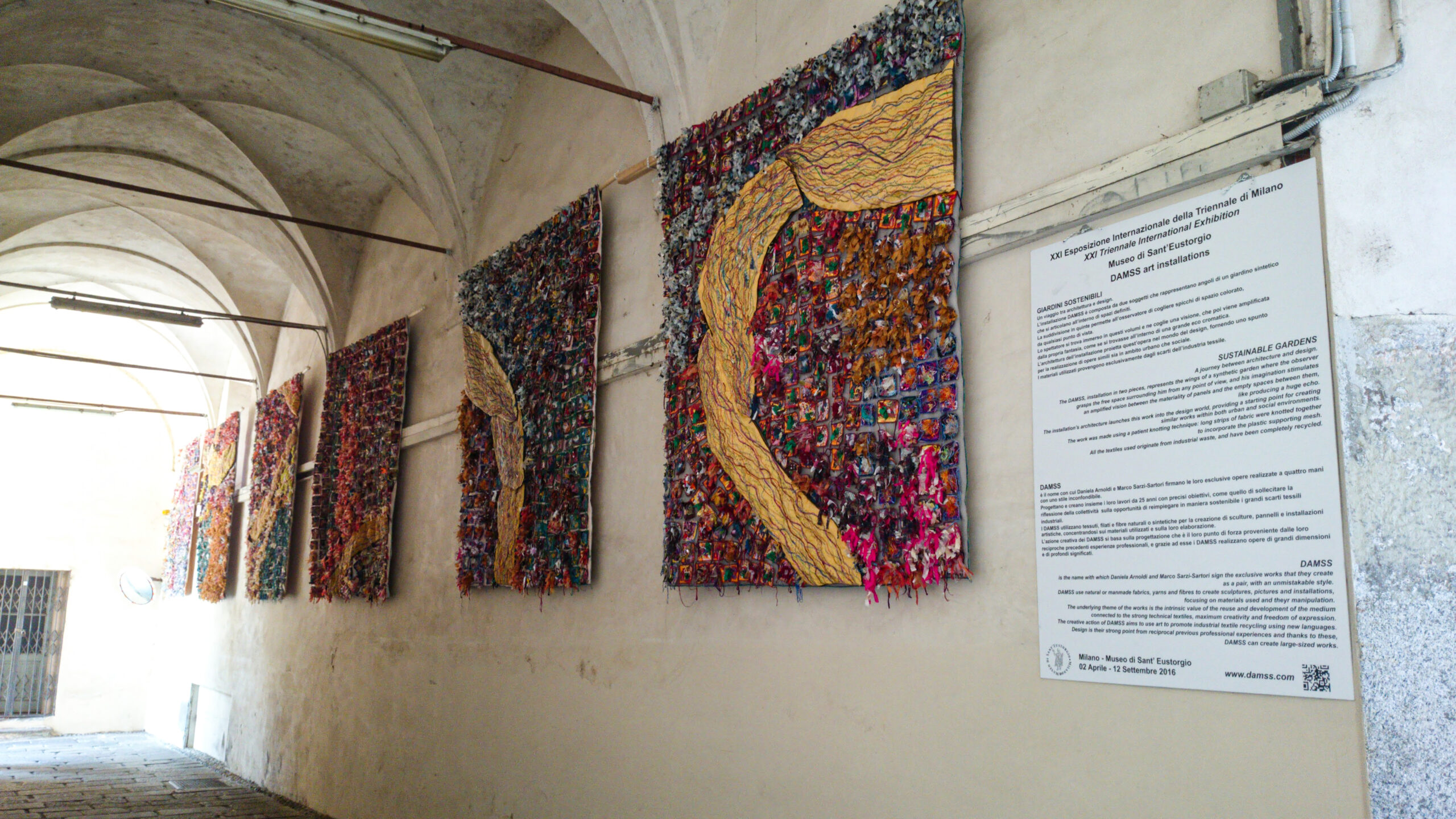Thousands, 2013
arazzo, seta, tessuti sintetici, ricamo, 13 x 2,40 m, 6 pannelli 220 x 240 m ciascuno
L’opera è composta da 6 pannelli di tessuto sintetico fortemente elaborati, per dare risalto al grande segno giallo che simboleggia “il riciclo tessile”. All’interno del segno sono racchiusi tre gesti, uno per l’individuazione del materiale richiesto nella massa di scarto, un altro per la sua manipolazione creativa, il terzo rappresenta la sua elevazione verso una nuova vita, sotto forma di manufatto artistico. Le tremila tessere che costituiscono il corpo dell’opera d’arte sono state ottenute con tessuto sintetico che abbiamo trasformato ed elaborato con alcune nostre tecniche personali.
Le dimensioni dell’opera sono m 6,60 x 4,80 in una versione compatta, che può subire la trasformazione lineare di 13 metri di larghezza, essendo stata progettata a tale scopo.
The artwork consists of 6 intricately crafted panels of synthetic fabric, highlighting the prominent yellow symbol that represents “textile recycling.” Within the symbol, three actions are encapsulated: one for identifying the required material within the mass of waste, another for its creative manipulation, and the third represents its elevation towards a new life in the form of an artistic artifact. The three thousand tiles constituting the body of the artwork were obtained from synthetic fabric that we transformed and processed using some of our personal techniques.The dimensions of the artwork are 6.60 x 4.80 meters in a compact version, which can undergo a linear transformation to 13 meters in width, as it was designed for this purpose.

arazzo, seta, tessuti sintetici, ricamo, 13 x 2,40 m, 6 pannelli 220 x 240 m ciascuno

arazzo, seta, tessuti sintetici, ricamo, Installation view Museo di Sant’Eustorgio, Triennale Milano XXI design after design Milano, 2016

arazzo, seta, tessuti sintetici, ricamo, Installation view